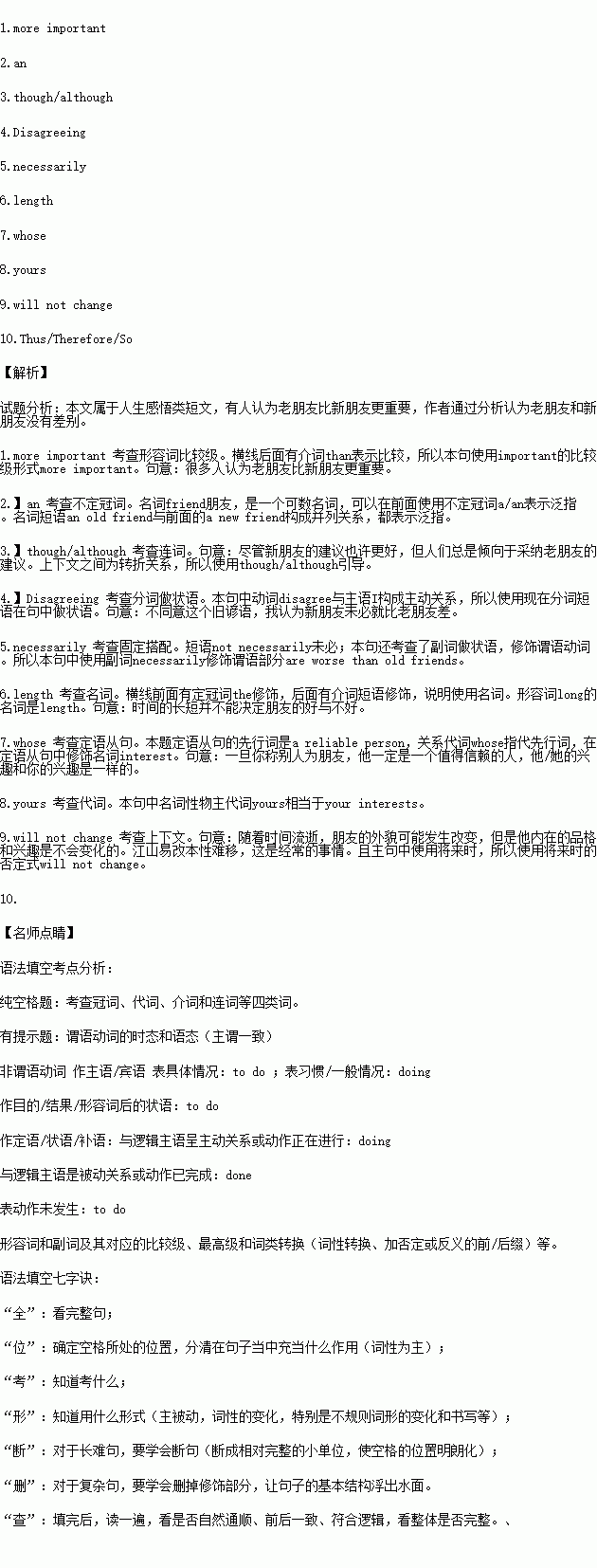题目内容
阅读下面材料,在空白处填入适当的内容(不多于3个单词)或括号内单词的正确形式。
An old proverb says, “Friends are like wine; the older, the better.” So, nowadays many people consider old friends to be 1. (important) than new friends. For example, if two pieces of advice 2. (give) to solve a problem, one from a new friend and the other from 3. old friend, people always tend to 4. (adoption) the latter one, although the new friend's advice may be better.
5. (disagree) with the old proverb, I believe that new friends are not 6. (necessary) worse than old friends. Why? Because the length of time cannot determine whether your friendship is better or not.
Once you call someone friend, he must be a person who is 7. (rely) and whose interests are in common with 8. (you). As time goes by, a friend's outside look may change, but the inside characters of him and his interests 9. (change).It is just these unchangeable characters and interests 10. make him a friend to you. Therefore, on this point, there is no difference between old friends and new friends.
 阅读快车系列答案
阅读快车系列答案
